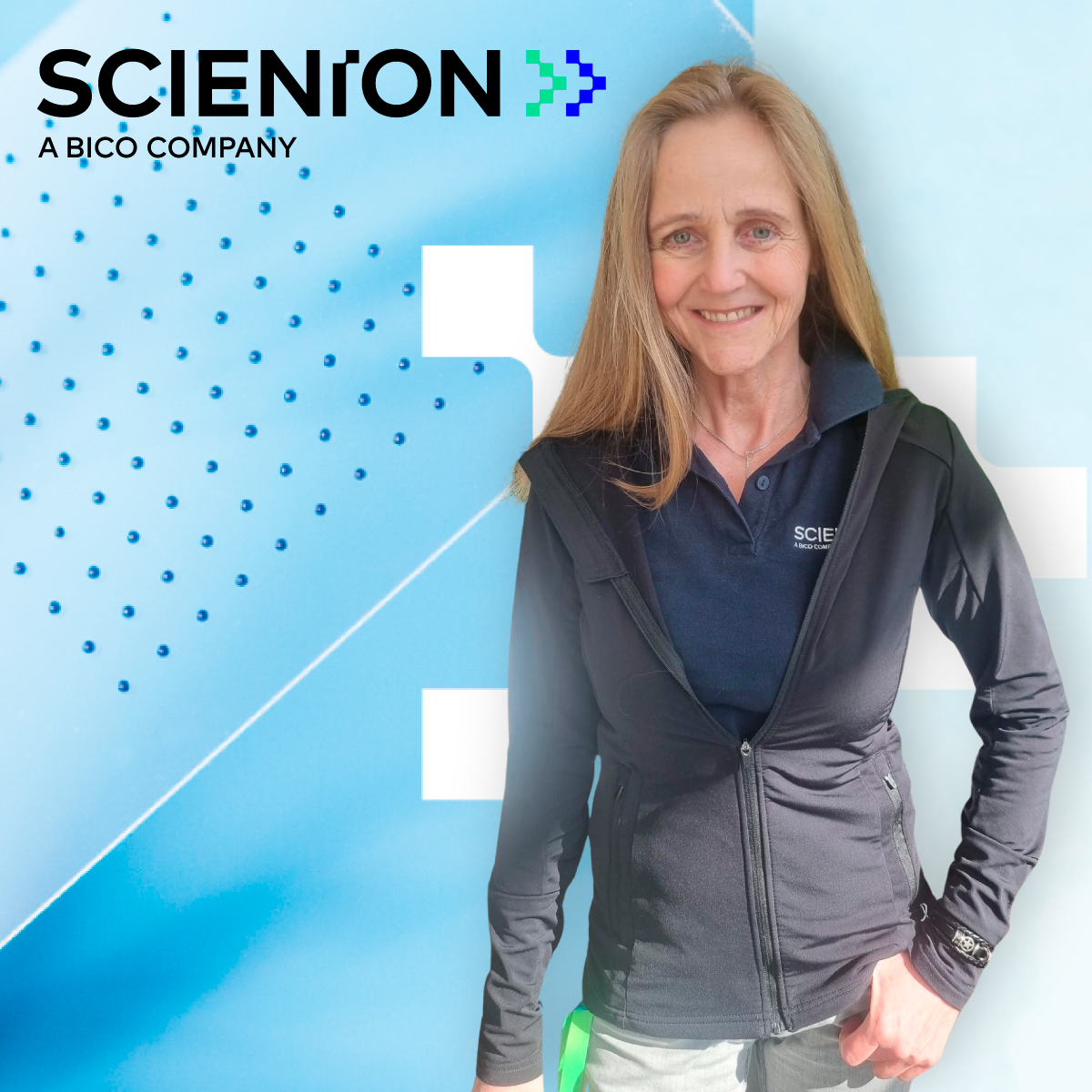Get to know SCIENION: Beatrix „Trixi“ Röhrdanz, Senior Scientist – 23 years experience in microdispensing

SCIENION GmbH started its journey in 2001 as a spin-off of the Max Planck Institute for Molecular Genetics based in Berlin. With over 150 colleagues worldwide, we have always kept our finger on the pulse of science.
As a full solution provider for the development and manufacturing of new diagnostic platforms, SCIENION accompanies its clients through the whole process from an idea to a viable product. This couldn’t be done without a dedicated team of scientists working in the R&D department. Beatrix Roehrdanz, who has a background in chemical and process engineering, started her career at SCIENION when the company was founded with only ten employees. With her enormous know-how and technical expertise, she contributed to many successful projects in this exciting field.
Q: What do you do at SCIENION?
A: In brief, I work very closely with customers to establish their assays using our printing technology. Our customers’ projects are super interesting, vary greatly, and involve technology developments like biosensors, microfluidic devices, and microneedle patches. Additionally, sample characteristics, accuracy, and throughput need to be considered. Helping our customers transform their ideas for new diagnostic tests into reality describes my role as a Senior Scientist very well, and I enjoy it very much.
Q: What does your day at SCIENION consist of?
A: My days are very dynamic and involve a mix of organizational and operational activities. In the mornings, I usually focus on customer communication, checking emails and responding to customer requirements. Then I either plan a new project or work on an existing customer project in the lab. Typical project tasks include establishing a printing process for challenging sample types, such as high viscosity, or printing targets, such as biosensors with high spot density.
I’m often on the phone with customers who are in need of urgent support throughout the day, or I’m helping new colleagues learn dispensing technology’s special tricks.
In the end, I like to ensure smooth processes by documenting customer requests.
Q: Why do you love your job and what do you most enjoy doing?
A: Definitely diversity! And not just in terms of new technologies – the cultural and working backgrounds of our customers are very different and interesting. Our customers worldwide range from scientists at universities and institutions to start-ups and global corporations – and they all have their own stories. That makes my day incredibly exciting – and you always stay up to date with technology trends.
I would say that I enjoy mostly the close partnership I have with my customers. There is nothing better than seeing a project we collaborated on succeed and be brought to market. Moreover, my work contributes to improving health and replacing animal testing, which is extremely motivating for me.
Q: When you look back, what was your most exciting project over the years?
A: When I look back at the beginnings of my career, I still remember my first printing project on a biosensor in 2004. That was exciting! To achieve this, we had to implement our specific head camera which is still in place in all our instruments today.
In the last few years, technology has tremendously advanced and here are just two projects I can highlight:
In the first project, we succeeded in printing 3000 spots on one miniaturized diagnostic test, not bigger than a standard glass slide. Each one of these spots can be checked for a diagnostic biomarker, in record time using microfluidics techniques. The test will help doctors determine the most appropriate treatment for their patients and significantly lower the burden on healthcare costs.
Secondly, I was very happy to be part of a completely new technology project where we succeeded in dispensing on very tiny microneedle patches, more specifically on more than 50 individual needles per patch.